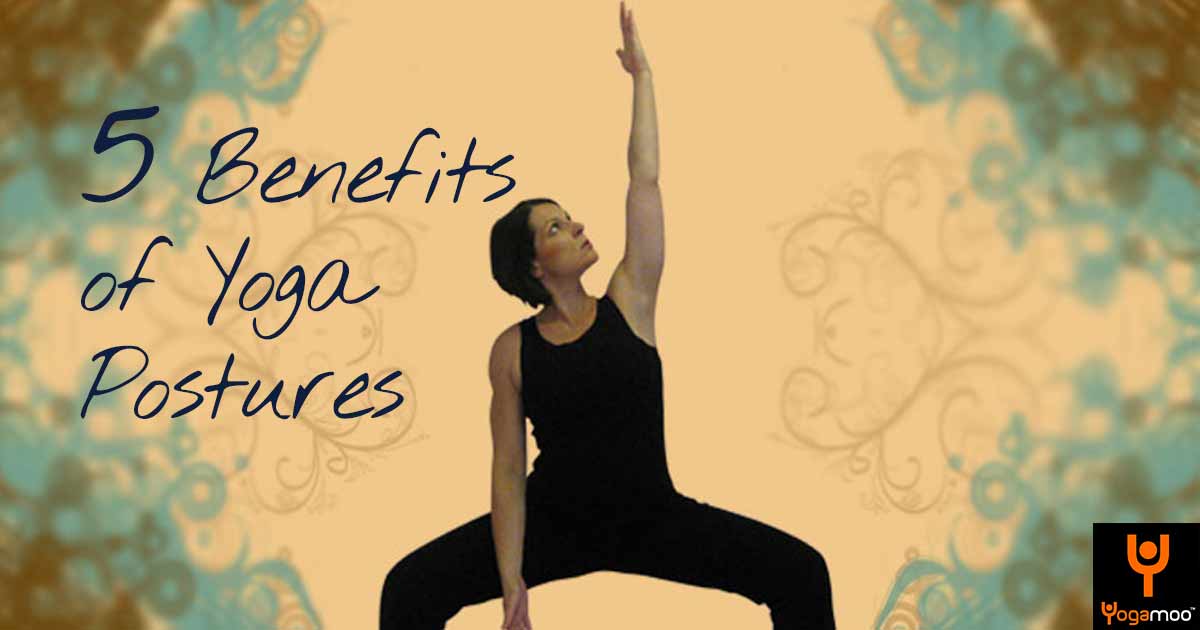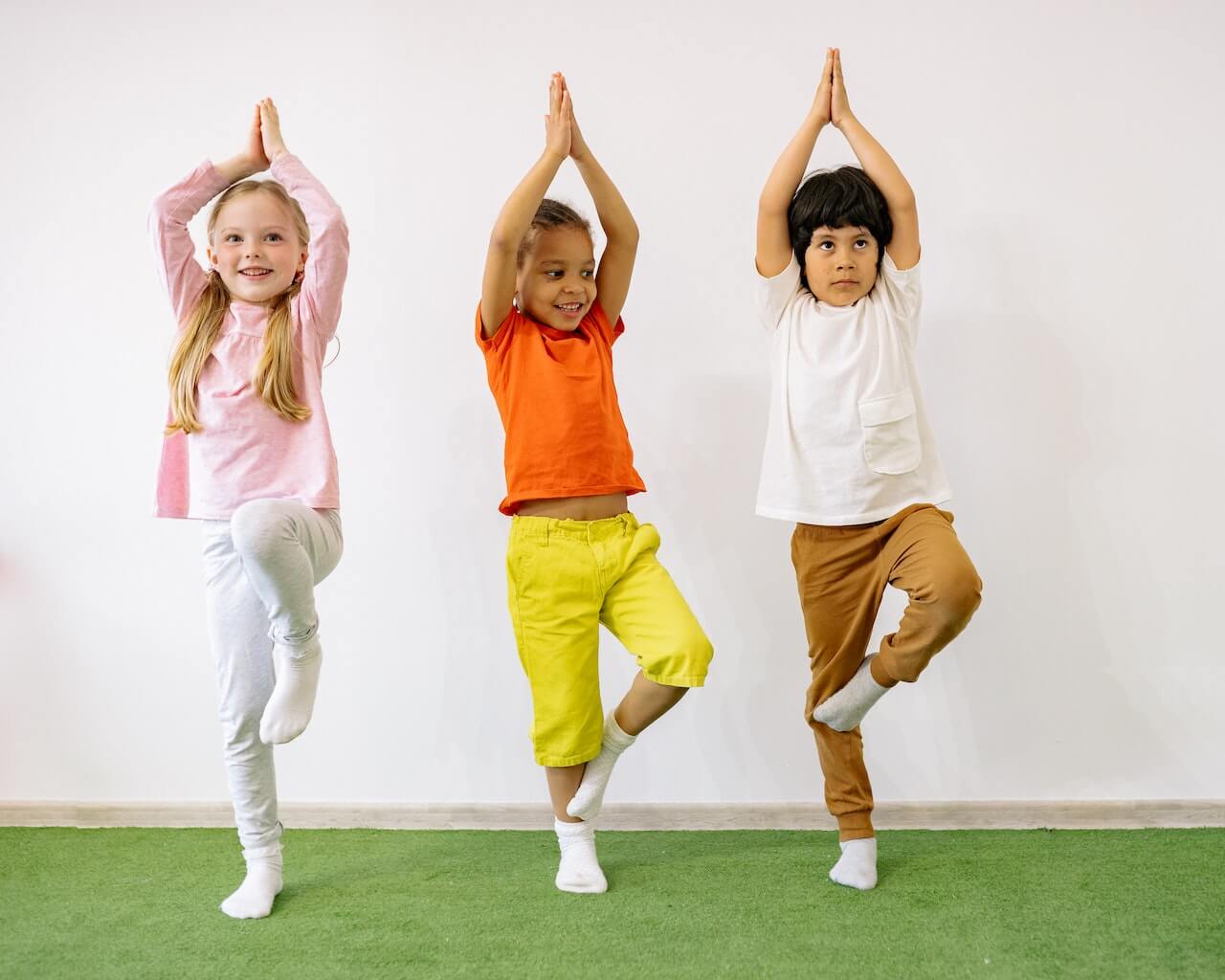1. Mobility and Flexibility of the spine:
The yoga postures that aim at the mobility of the Spine are primarily Back-Bends such as Setu Bandha (Bridge), Bhujangasana (Cobra) and Dhanurasana (Wheel) or Ustrasana (Camel).
Those should be practiced after some spine warm-up kneeling postures such as Bitilasana (Cat-Cow) or Adho Mukha Svanasana (Downward Dog).
2. Improved Muscle Tone and Bone Density
Standing postures aim to promote good skeleton-muscle alignment and increase strength and stamina in the muscles of the limbs in particular the Warrior series. When yoga postures are held for a few breaths the muscles work isometrically, promoting muscle tone and strength.
Some of these yoga postures in combination will aim to open the Chest and Heart Centre, for instance Warrior I (Virabhadrasana I), Bhujangasana (Cobra); Matsyasana (Fish); Salambhasana (Locust) or Parsvakonasana (Side-Angle) or Supta Virasana (Reclined Hero).
The benefits derived are the health of the respiratory system, with better lung performance, full relaxation of the Diaphragm, improvement of lower back pain and on the emotional side help with opening up to life and others. On the energy and emotional level, a chest or heart opening practice is energising and revitalising and more expansive.
3. Orientation, Concentration and Balance:
Yoga postures such as Tadasana (Mountain) or Vrksasana (Tree) require concentration and are therefore an excellent way to practice one-pointedness and quietening of the mind while warming and strengthening the leg muscles and working energy flow with Moola Bhanda (Pelvic Floor Lock) and Core Strength with Uddiyana Bandha (Flying up Lock)
4. Cardiovascular, Nervous System and Upper Body Strength:
Inversions such as Sirsasana (HeadStand) or Sarvangasana (Shoulder stand) and Arm Balances work the muscles of the Arms and Shoulders, as well as Shoulder joints, shoulder blades.
Variations should be used for beginners so that they can also experience the main benefits of Inversion such as increased blood flow to the head, support of the heart and cardio vascular system, and stimulation of the thyroid gland which is known to improve conditions such as diabetes. These poses are called the King and Queen of all Poses for these reasons among others.
5. Spine and Nervous System Rejuvenation:
Seated yoga postures such as Forward Bends are closing and calming postures. They work on stretching the back body, i.e. the hamstrings and the back muscles alongside the spine while Twists work on mobility of the lumbar, thoracic and cervical spine, squeezing toxins out of the digestive system, massaging the abdominal muscles and nourishing the spine nerve ending thereby rejuvenating the nervous system.
Some of the cross-legged postures such as Sukhasana (Easy Seated) and Padmasana (Lotus) increase flexibility in the hips. In particular Twists such as Marichyasana III (Marichi Twsit) massages the abdominal organs and promotes the health of the digestive system and relieves from constipation.


Leave A Comment